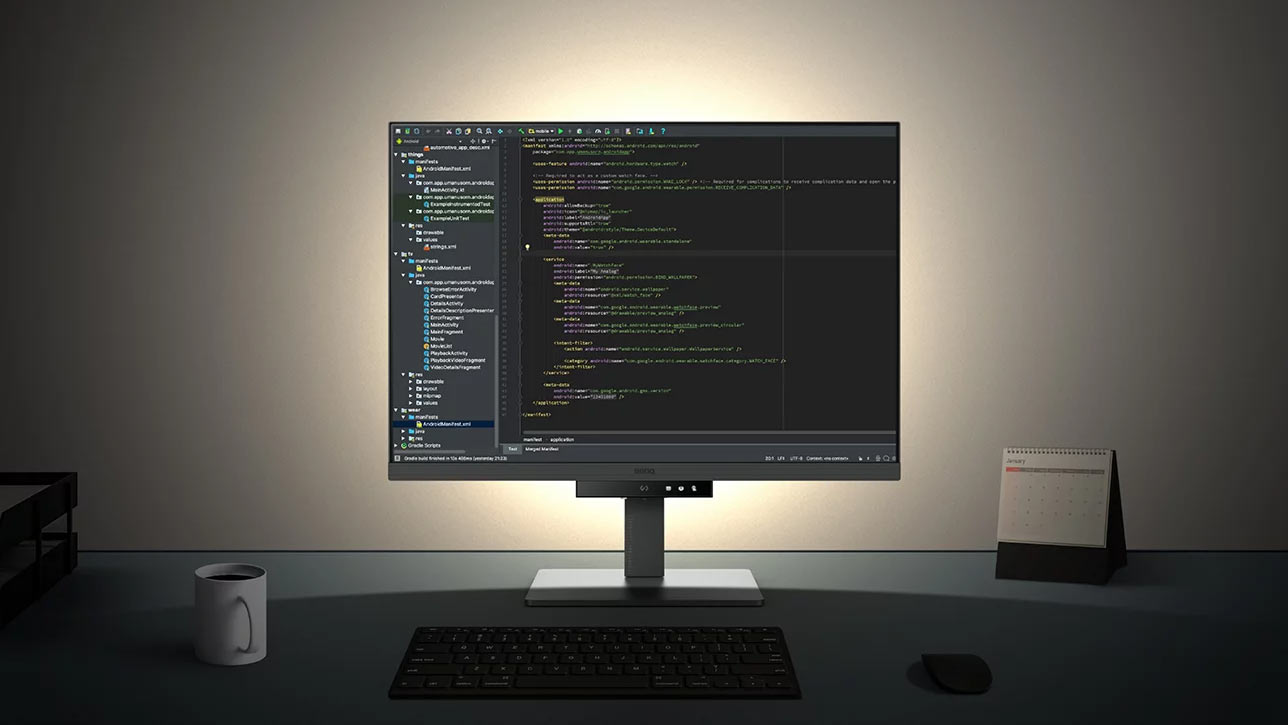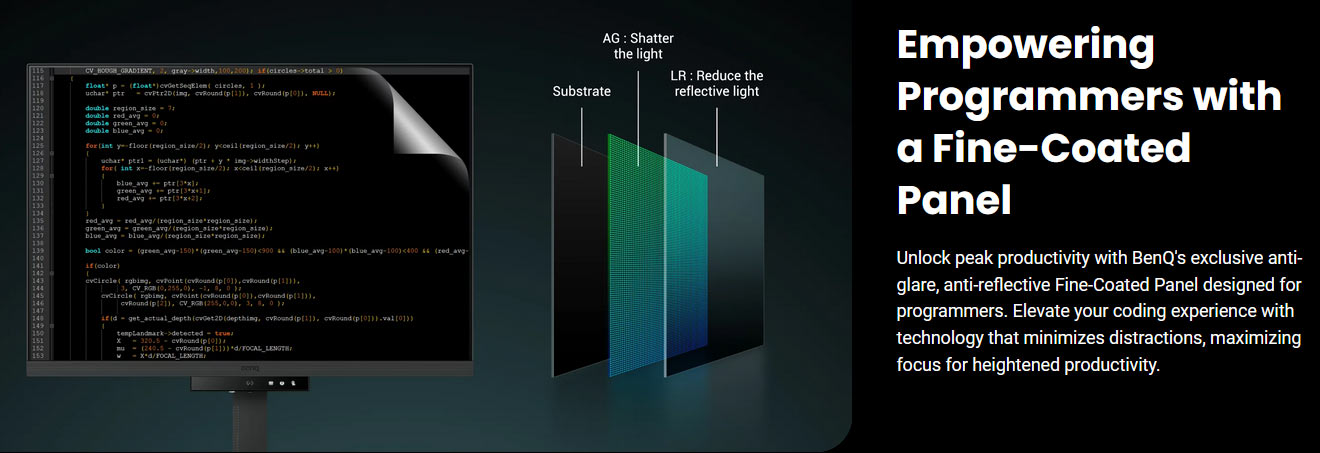BenQ RD Series monitors target software developers — 16:10 ratio for more verticality
Attractions include BenQ's Advanced Coding Modes and improved ergonomics.

BenQ has announced its new RD Programming Series of monitors. These coder-friendly screens offer standard features like a 16:10 ratio display, Advanced Coding Modes, eye care protection for working at night and "Brightness Intelligence" auto-dimming, anti-glare screen coatings, and ergonomic stands.
The first in the series is the new RD240Q, a 24.1-inch model with a 2,560 x 1,600 pixels IPS panel.
The new RD Programming Series is the world’s first designed to cater to the specific needs of programmers, reckons BenQ. But before we pick over those special coder-friendly features, we shall look at the basic tech specs of the new RD240Q to see how it stands up on a hardware level.
Based on a 24.1-inch IPS screen, the BenQ RD240Q is pretty small by trending monitor sizes in 2024. However, it offers extra useful verticality by employing 2,560 x 1,600 pixels, and delivers a pixel density of 125ppi. Moreover, at least some of BenQ’s promo materials envision coders using two or three of these displays.
Benq’s RD240Q goes up to 300 nits of brightness, offers a typical 1000:1 contrast, and covers 95% of the DCI-P3 gamut. In terms of performance, we are looking at a max refresh rate of 60 Hz and a response time of 5 ms. These specs are very ordinary. If this was a monitor aimed at casual PC users, only the resolution offered would stand out and we would expect it to be a value-targeted monitor.




So, what has BenQ done to make this a worthwhile choice for programmers? Much of the special coder sauce is in the firmware, offering modes like Coding - Dark Theme, Coding - Light Theme, ePaper, HDR, M-Book, and Cinema. Also, BenQ claims the coding modes offer “crystal clear fonts and improved code differentiation.” We would like to see these claims put to the test in a third-party review.
As part of its MoonHalo experience, BenQ says the RD240Q offers some eye-soothing features that are meant to limit your exposure to blue light and Brightness Intelligence Gen2 auto-dimming of the display to match your environment. A rear LED ring provides adjustable environmental lighting. Flicker-free technology is present too. The anti-glare and anti-reflective features here also sound appealing to for spending a long time concentrating on the screen.
Get Tom's Hardware's best news and in-depth reviews, straight to your inbox.
BenQ provides a stand that offers tilt (-5 degrees - 20 degrees), swivel (15 degrees/ 15 degrees), pivot, and height (110 mm) adjustments. If you pivot the display it is smart enough to auto-rotate. If you don’t like or need the stand, the monitor comes with 100 x 100 VESA mounting holes. Display Pilot 2 software is also provided for display adjustments and management.
The port selection seems adequate. Users get one each of HDMI 2.0, DP 1.4, and USB -C (daisy chainable). As well as offering display connectivity the USB-C can provide power and data transfer. BenQ’s RD240Q can provide three USB-A outs and one USB-C out, offering hub functionality. There is a headphone jack and a pair of 2W built-in speakers.
We don’t have BenQ RD240Q pricing and retail availability details at the time of writing. Coming soon to the RD Programming Series will be a pair of larger screen options, specifically the 28-inch 4K+ RD280U/UA, and 31/5-inch 4K+ RD320U/UA.

Mark Tyson is a news editor at Tom's Hardware. He enjoys covering the full breadth of PC tech; from business and semiconductor design to products approaching the edge of reason.
-
BillyBuerger I don't know that I really care much about the "coding" features of the monitors. But, anything to have more 16:10 monitor options is nice to see. And supports daisy chain is supper helpful for multi-monitor setups. We've been using Dell for many years as it's been one of the only option for 16:10 monitors with daisy chain. These usually cost > $300. So if these are less than that, I could definitely see these as an option. Assuming the 28" 4K+ is also 16:10, that would be the only option for something like that. I'm going to keep an eye on these.Reply -
Notton I'm disappointed LG Dualup didn't catch on. That was the ultimate monitor for productivity.Reply
It had a 16:18 2560x2880 panel.
You didn't have to worry about text looking weird in windows due to pixel orientation.
